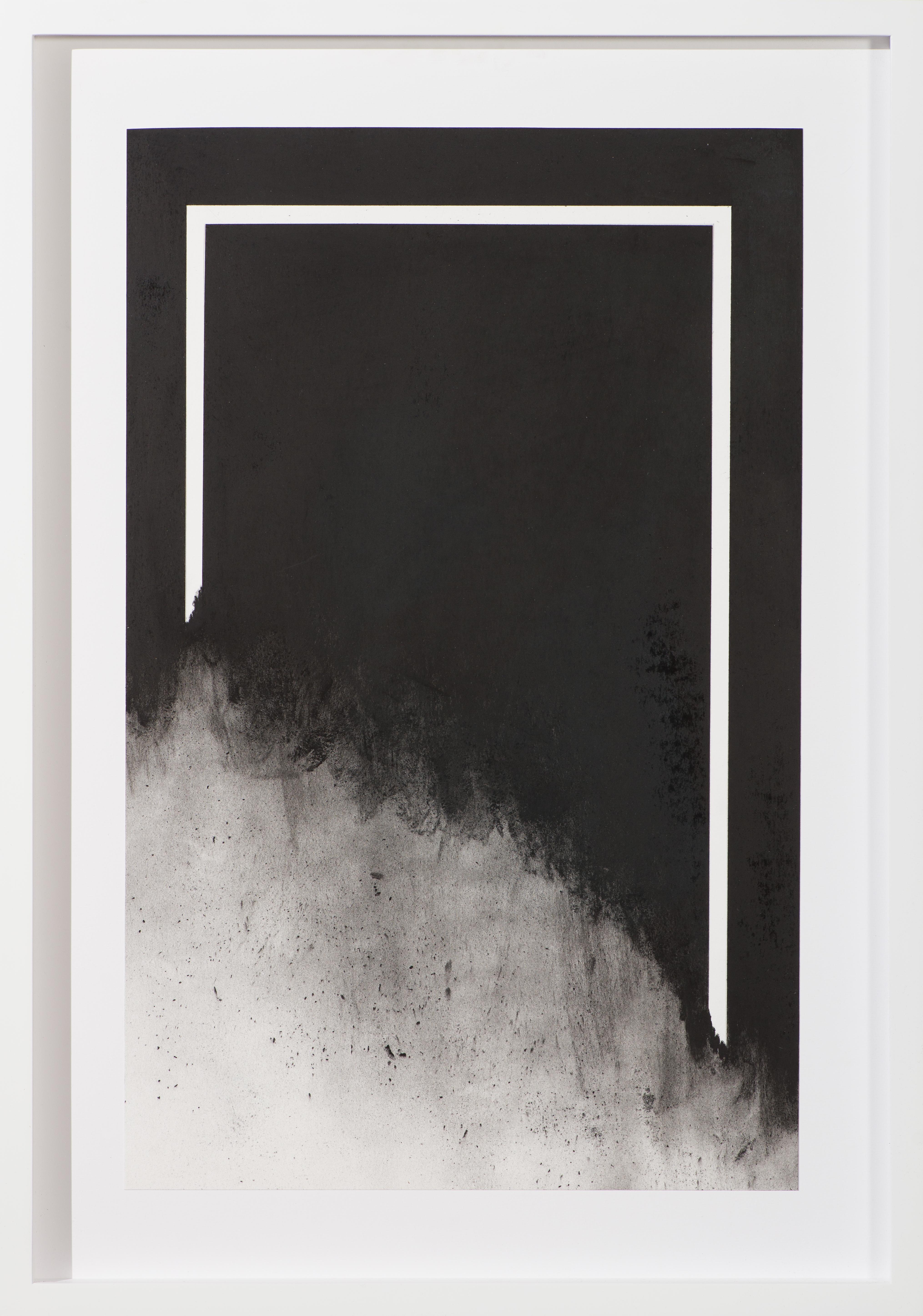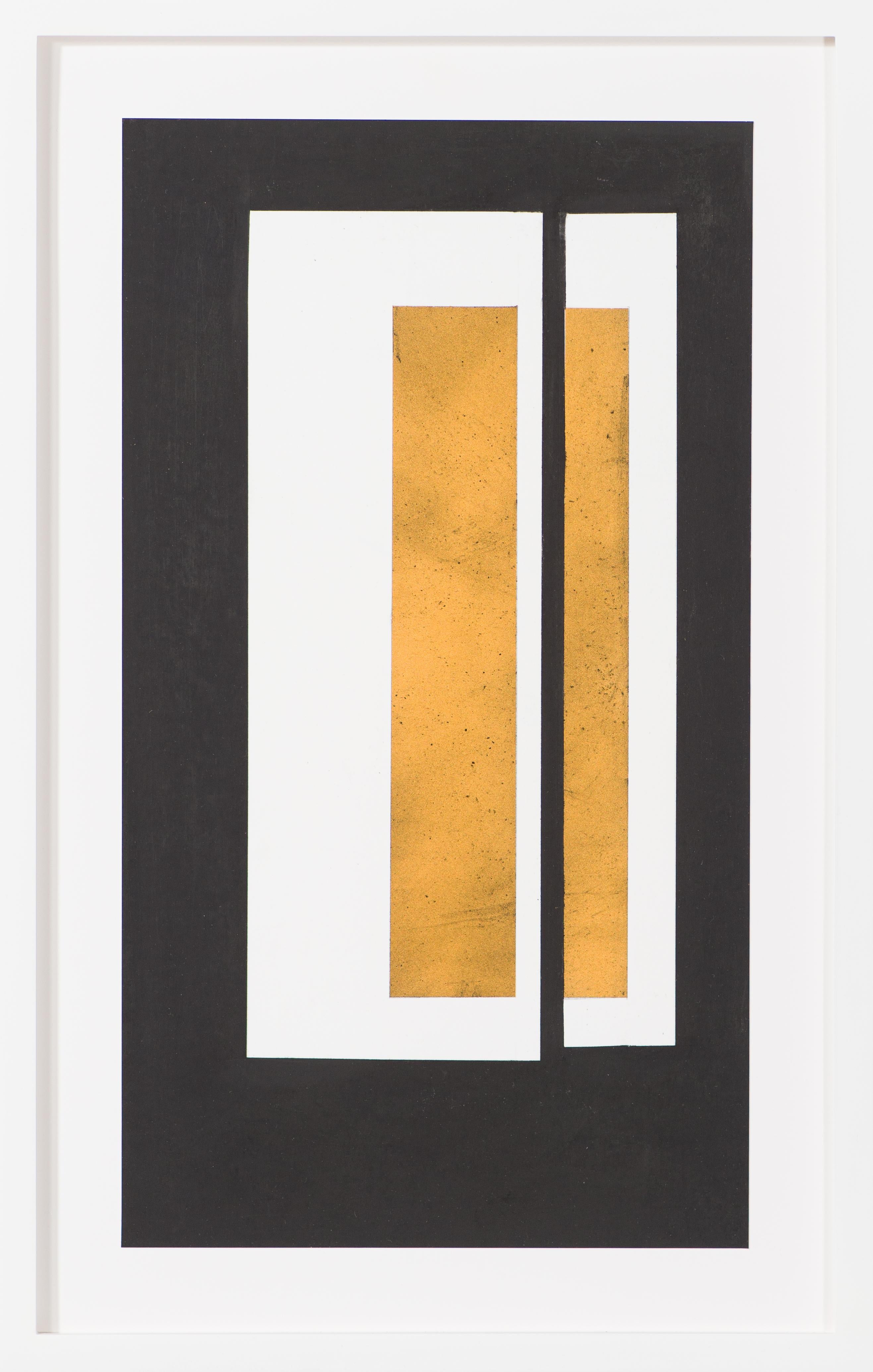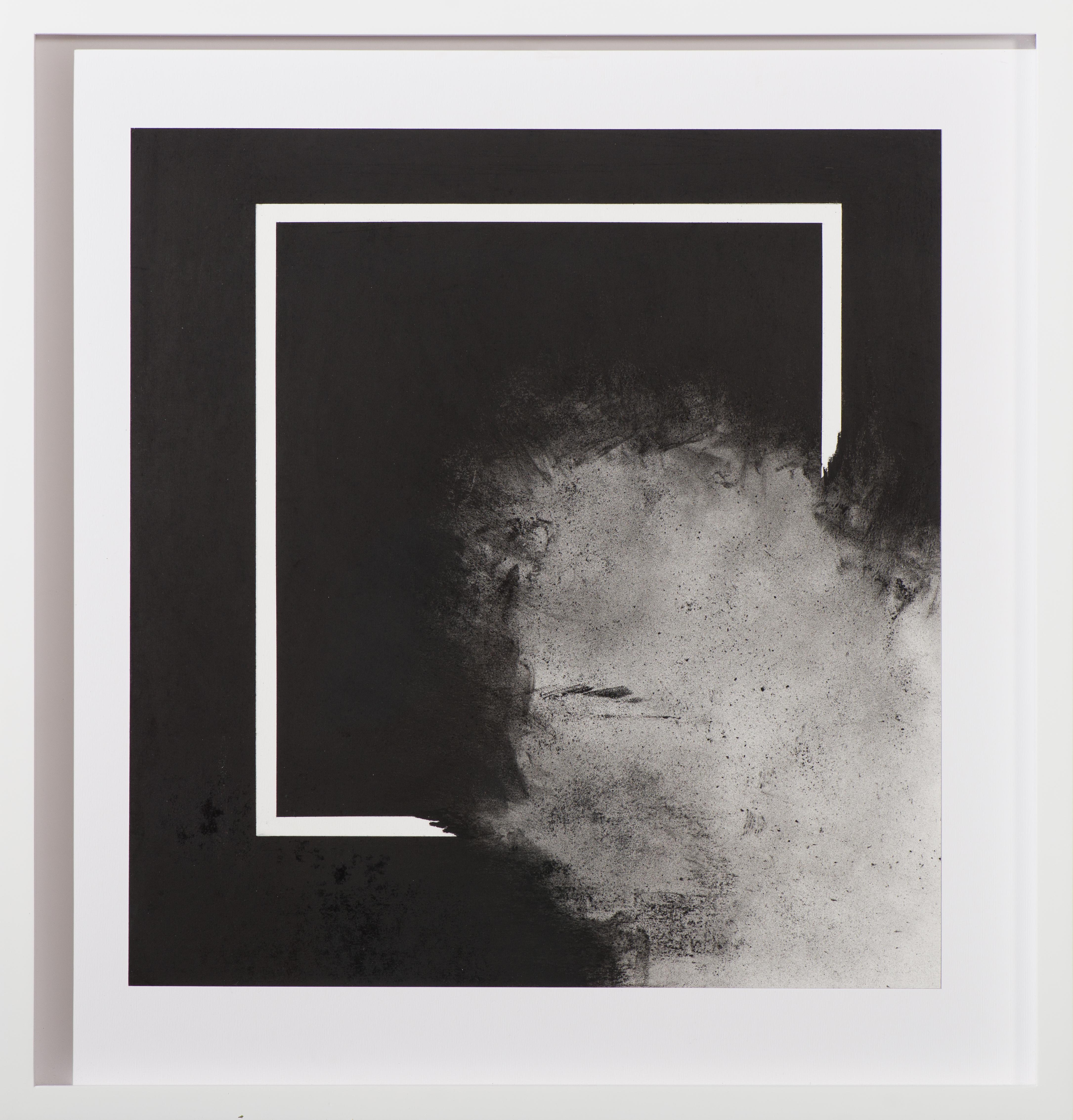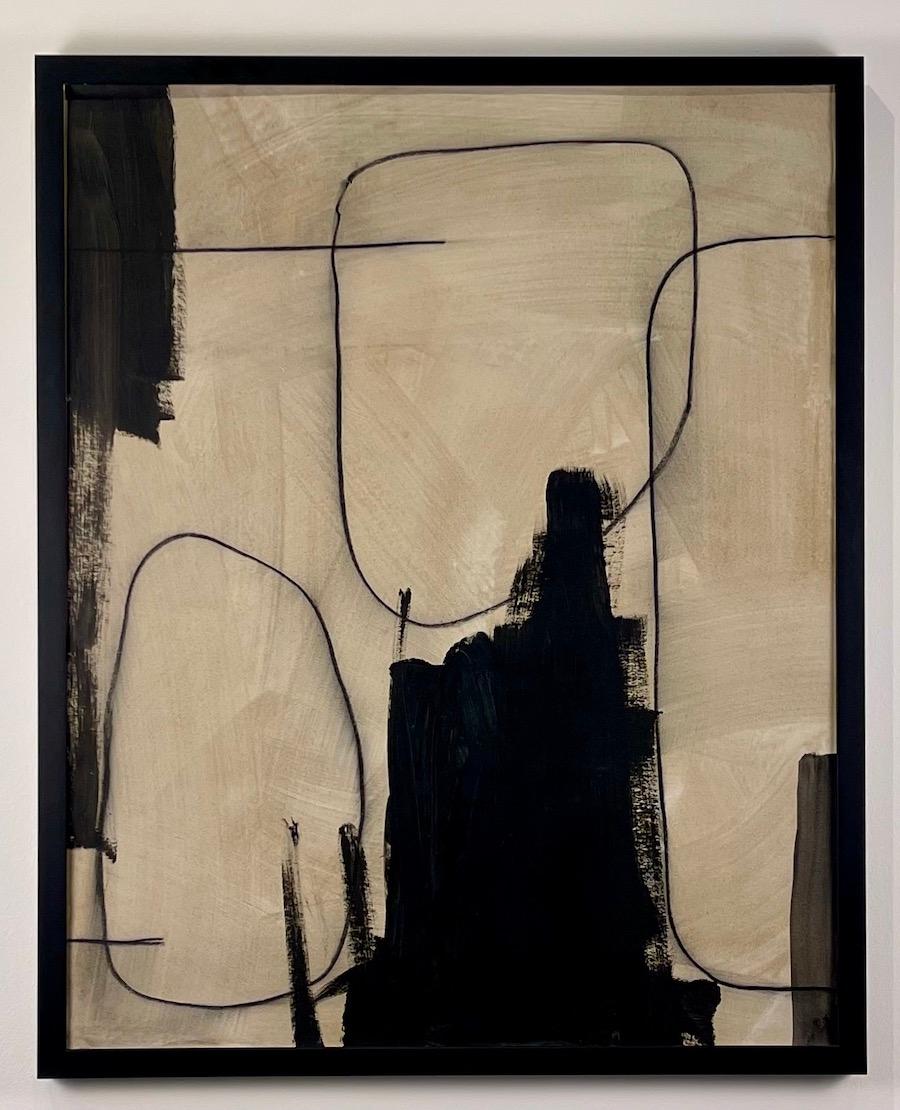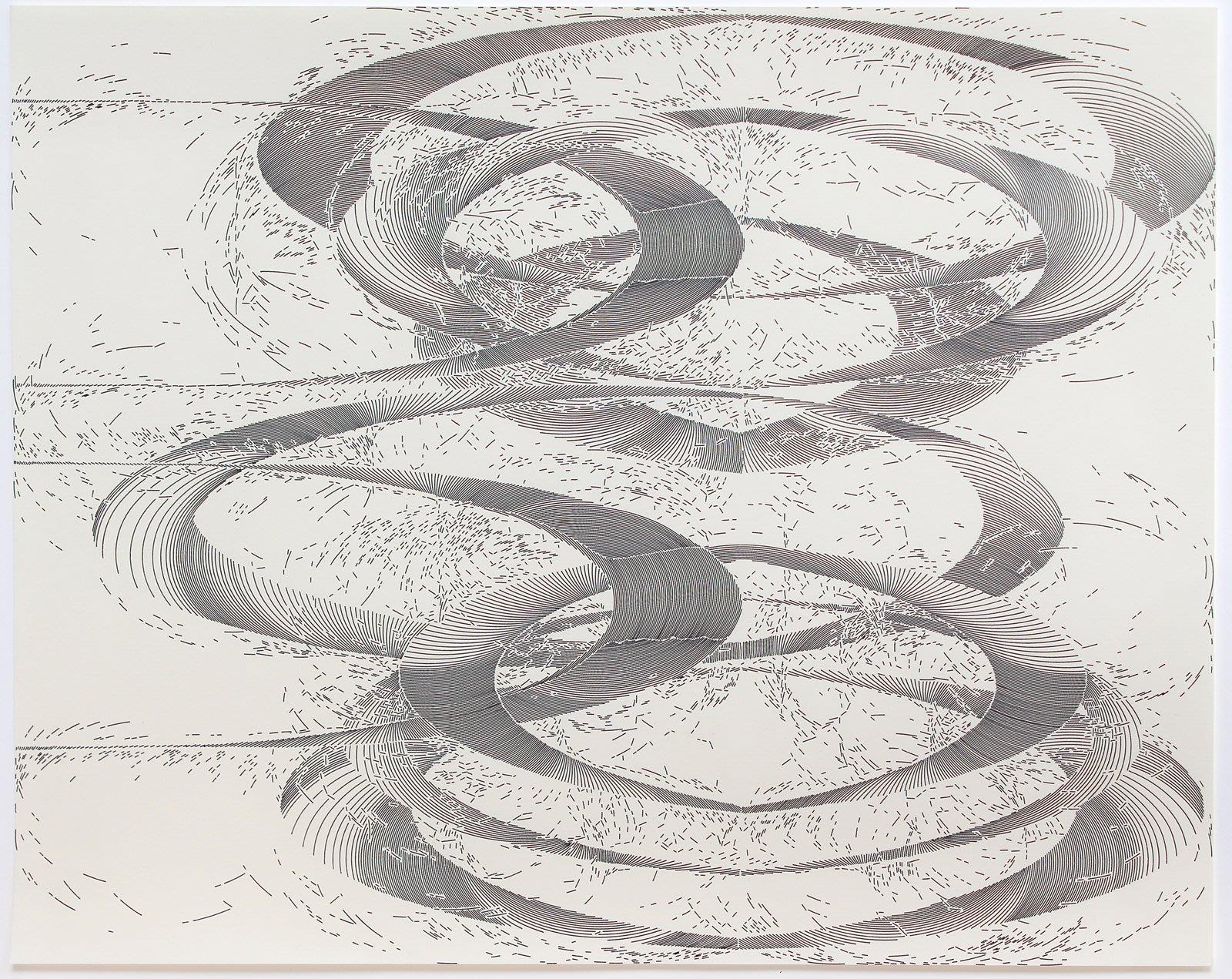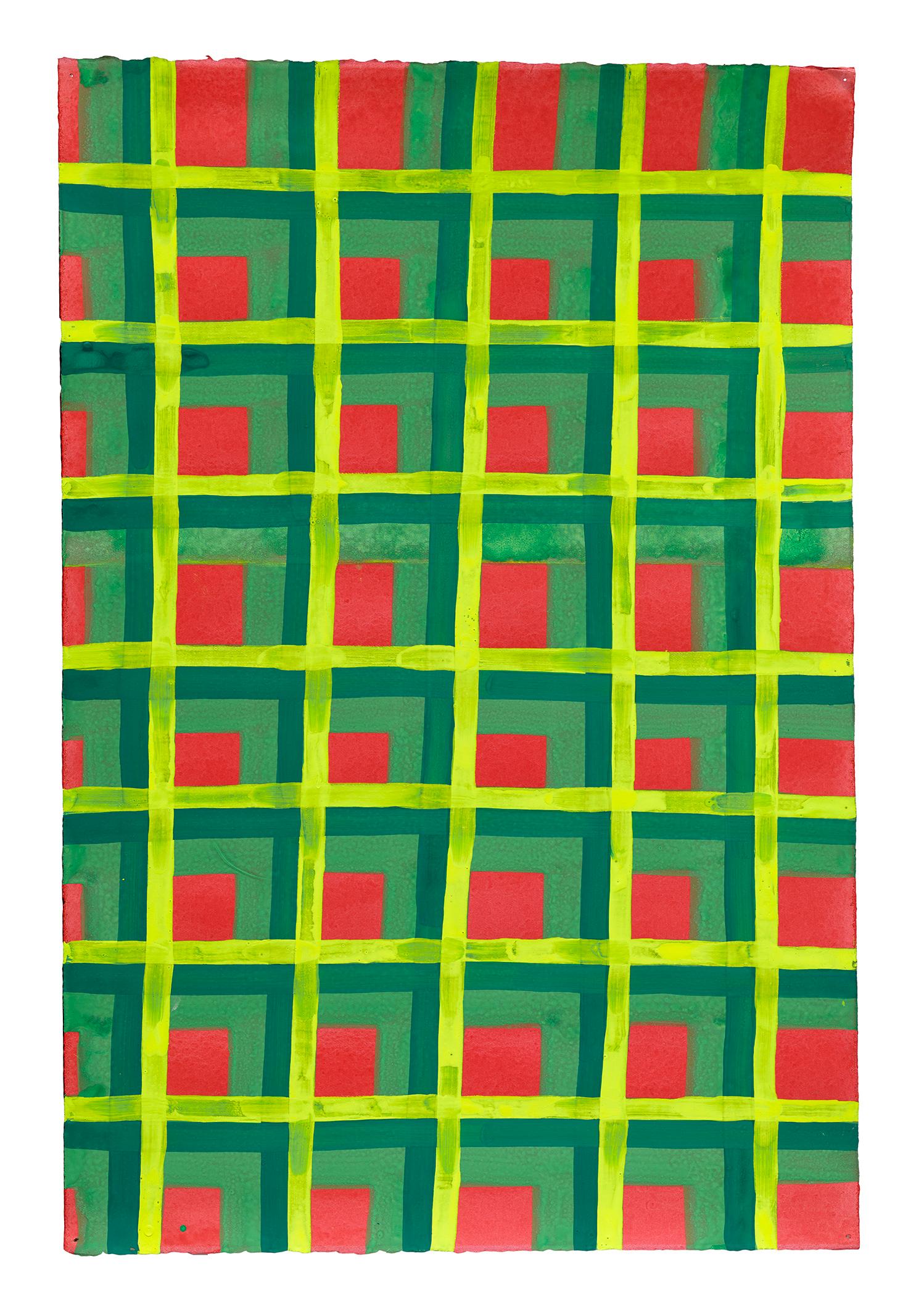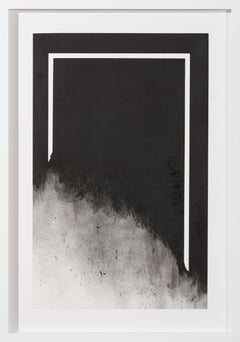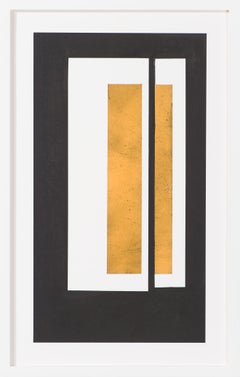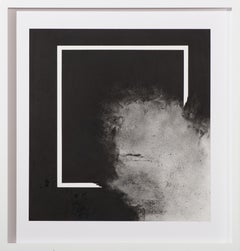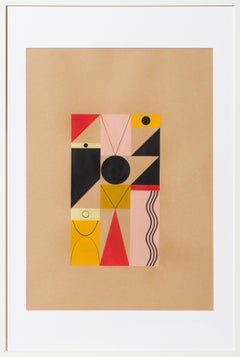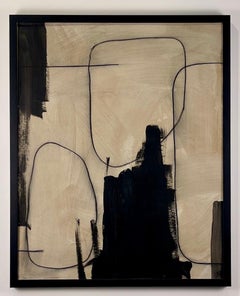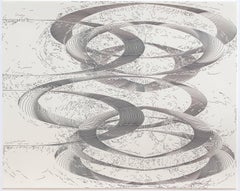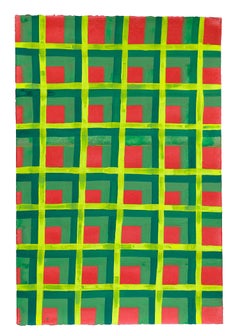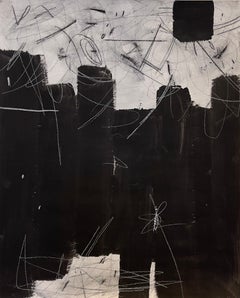Want more images or videos?
Request additional images or videos from the seller
1 of 7
George ThiewesUntitled 112020
2020
$20,000
£14,936.86
€17,332
CA$27,700.14
A$31,051.64
CHF 16,192.72
MX$380,617.26
NOK 205,189.01
SEK 195,079.65
DKK 129,319.19
Shipping
Retrieving quote...The 1stDibs Promise:
Authenticity Guarantee,
Money-Back Guarantee,
24-Hour Cancellation
About the Item
charcoal and pearl paint on paper
52.25 x 25.25 x 1.5 inches framed
In the fields of sculpture and drawing, George Thiewes creates sharp, angular work with a focus on the interaction of light and dark. That interest began in the 1990s when Thiewes was working on theatrical set designs, where he had to learn to create the illusion of space through lighting. Thiewes’ sculptures are mounted on or in the wall and painted the same color as the gallery, making them hardly noticeable, except for their cast shadows. The sculptures exist autonomously, while also defining and interacting with the surrounding space. Theiwes explores shadow as a sculptural and drawn medium; specifically how the work changes throughout the course of a day as both natural and artificial light change in intensity, temperature, and direction. The angles created by light and shadow give the appearance of folds, an illusion Thiewes investigates in his drawings.
His work is included in the permanent collections of the Art Institute of Chicago, Smithsonian Institute, Philadelphia Museum of Art, Chrysler Museum, Toledo Museum of Art, Arkansas Art Center, and Rochester Institute of Technology.
- Creator:George Thiewes (1943, American)
- Creation Year:2020
- Dimensions:Height: 52.25 in (132.72 cm)Width: 25.25 in (64.14 cm)Depth: 1.5 in (3.81 cm)
- Medium:
- Movement & Style:
- Period:
- Condition:
- Gallery Location:Phoenix, AZ
- Reference Number:Seller: 2020060431stDibs: LU1376898962
About the Seller
5.0
Vetted Professional Seller
Every seller passes strict standards for authenticity and reliability
Established in 1984
1stDibs seller since 2012
67 sales on 1stDibs
- ShippingRetrieving quote...Shipping from: Phoenix, AZ
- Return Policy
Authenticity Guarantee
In the unlikely event there’s an issue with an item’s authenticity, contact us within 1 year for a full refund. DetailsMoney-Back Guarantee
If your item is not as described, is damaged in transit, or does not arrive, contact us within 7 days for a full refund. Details24-Hour Cancellation
You have a 24-hour grace period in which to reconsider your purchase, with no questions asked.Vetted Professional Sellers
Our world-class sellers must adhere to strict standards for service and quality, maintaining the integrity of our listings.Price-Match Guarantee
If you find that a seller listed the same item for a lower price elsewhere, we’ll match it.Trusted Global Delivery
Our best-in-class carrier network provides specialized shipping options worldwide, including custom delivery.More From This Seller
View AllUntitled 10
By George Thiewes
Located in Phoenix, AZ
charcoal on paper
27.25 x 19.25 x 1.5 inches framed
In the fields of sculpture and drawing, George Thiewes creates sharp, angular work with a focus on the interaction of light and ...
Category
2010s Abstract Geometric Abstract Drawings and Watercolors
Materials
Paper, Charcoal
Untitled 14
By George Thiewes
Located in Phoenix, AZ
charcoal and pearl paint on paper
21.75 x 13.75 x 1.5 inches framed
In the fields of sculpture and drawing, George Thiewes creates sharp, angular work with a focus on the interacti...
Category
2010s Abstract Geometric Abstract Drawings and Watercolors
Materials
Paint, Paper, Charcoal
Untitled 9
By George Thiewes
Located in Phoenix, AZ
charcoal on paper
22.25 x 21.25 x 1.5 inches framed
In the fields of sculpture and drawing, George Thiewes creates sharp, angular work with a focus on the interaction of light and ...
Category
2010s Minimalist Abstract Drawings and Watercolors
Materials
Paper, Charcoal
Untitled 2
By Danielle Hacche
Located in Phoenix, AZ
pastel and micro pen on paper
b. 1979, Poole, Dorset, UK
Danielle Hacche was born in Poole, Dorset in the Southwest of the United Kingdom. After moving to the United States with he...
Category
2010s Abstract Geometric Drawings and Watercolor Paintings
Materials
Paper, Pastel, Pen
Primal Drawing IV
By Mark Pomilio
Located in Phoenix, AZ
charcoal on paper (41.75 x 36.75 x 1.75 inches)
Mark Pomilio’s method, motives, and conceptual considerations are centered on visually articulating recent developments in the life ...
Category
2010s Abstract Geometric Drawings and Watercolor Paintings
Materials
Charcoal, Archival Paper
He
By Mark Pomilio
Located in Phoenix, AZ
charcoal on paper, mounted to foam core and wood
Mark Pomilio’s work focuses on the research of fractals, cloning, and single cell manipulation. His mathematics-based drawings serve...
Category
2010s Abstract Geometric Abstract Drawings and Watercolors
Materials
Wood, Paper, Charcoal, Foam Board
$9,500
You May Also Like
Untitled #527 by Murray Duncan – Original Contemporary Mixed Media on Paper
Located in Toronto, Ontario
Untitled #527 by Murray Duncan – Contemporary Mixed Media on Paper
Size: 32" x 40"
Unframed, signed on the back
A striking exploration of form and movement, Untitled #527 by Murray ...
Category
21st Century and Contemporary Abstract Geometric Abstract Paintings
Materials
Oil Crayon, Acrylic, Pencil
325
Located in San Francisco, CA
Gerhard Mayer
"325", 2009
ink on paper
13 1/2 x 17 1/8 in
Category
Early 2000s Abstract Geometric Abstract Drawings and Watercolors
Materials
Paper, Ink
$2,500
Untitled
By Jack Davidson
Located in Houston, TX
Jack Davidson
Untitled, 2008
Gouache on paper
22.5 x 15 in (57.2 x 38.1 cm)
JPHB 5682
Category
21st Century and Contemporary Abstract Geometric Abstract Drawings and W...
Materials
Paper, Gouache
Untitled #904 by Murray Duncan – Original Contemporary Mixed Media on Paper
Located in Toronto, Ontario
Untitled #904 by Murray Duncan
Mixed media on paper
Size: 32" x 40”
Unframed, signed
A bold mixed-media work with dynamic lines and textures.
This captivating piece by Murray Dunc...
Category
21st Century and Contemporary Abstract Geometric Abstract Paintings
Materials
Glaze, Oil Crayon, Acrylic
Untitled #204 by Murray Duncan – Original Contemporary Mixed Media on Paper
Located in Toronto, Ontario
Untitled #204 by Murray Duncan
Mixed media on paper
Size: 32" x 40”
Unframed, signed
A bold mixed-media work with dynamic lines and textures.
This captivating piece by Murray Dunc...
Category
21st Century and Contemporary Abstract Geometric Abstract Paintings
Materials
Glaze, Oil Crayon, Acrylic
Untitled #529 by Murray Duncan – Original Contemporary Mixed Media on Paper
Located in Toronto, Ontario
Untitled #529 by Murray Duncan – Contemporary Mixed Media on Paper
Size: 32" x 40"
Unframed, signed on the back
A striking exploration of form and movement, Untitled #527 by Murray ...
Category
21st Century and Contemporary Abstract Geometric Abstract Paintings
Materials
Oil Crayon, Acrylic, Pencil
More Ways To Browse
American Oil Paintings
Simple Art
Prints London
Large Contemporary Art
Paintings By The Masters
New Century Framed Art
Name Of Artist
Large Original Art
American Abstract Artists
New York Original Art
Vintage Figurative Paintings
Signed Plate
Woman Art
Vintage Mid Century Paintings
Stamp Collection
Abstract Nature Art
Maier Paintings
Paintings Of London
